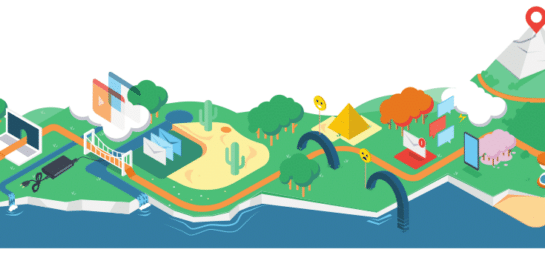ITSM trends: what is employee experience?

Employee experience has been all the rage in business for a while now. But what is employee experience? And why should service departments care?
In today's competitive landscape, organizations are realizing that the success of their customer service hinges on the happiness and engagement of their employees.
What is employee experience?
Employee experience encompasses every aspect of an employee's journey within an organization, from the initial recruitment process to their day-to-day work environment, growth opportunities, and overall well-being. It goes beyond just job satisfaction and delves into creating a positive and fulfilling workplace culture that fosters productivity, collaboration, and innovation.
So why should service departments care about employee experience? Well, it's simple - happy employees lead to happy customers.
Employee experience vs customer experience
Speaking of similar concepts – isn’t employee experience just customer experience (CX) for your colleagues? Well, yes and no. Yes, because, if you’re an internal service department, your colleagues are your customers. And no, because of one crucial difference: when it comes to improving your employees’ experience at work, you can have a far greater impact.
Let me explain. If you order something from an online shop, that retailer needs to make that ordering experience as smooth as possible. That’s an experience of no more than a few minutes, with only a few touchpoints.
As a service department aiming to improve employee experience, you can influence every minute of your colleagues’ working lives. From the drive to work in their company car, the coffee they sip when they arrive, to the programs and laptop they work with.
Customer experience is about optimizing the interactions your customer has with you when they are actively in contact with you. That’s important, too. But employee experience requires a more holistic approach.
Isn’t employee experience something for HR to worry about?
Well, yes, HR should also be thinking about employee experience. Engaging employees is one of the main challenges for any HR team. But improving employee experience is about more than drafting HR policies.
Just look at the examples mentioned earlier. Is your colleague comfortable in the company car you offer, or are they sweating because the air conditioning broke down 3 months ago? Do they like the coffee you’re serving or are they drinking it only because it’s free and there’s no Starbucks nearby? Can they work efficiently on their laptop, or do they have to wait 20 minutes for it to boot?
In order to answer these questions, service departments need to work together – from IT and Facilities to Finance and yes, HR.
The key to improving employee experience? Enterprise Service Management
Realizing that all service departments need to collaborate to deliver a great employee experience is the first step towards improving it: This is called Enterprise Service Management.
At most organizations, each individual department is pretty good at servicing their own customers. It’s only when a call or request has to be handled by more than one team or department that things tend to get murky. These teams often function as silos. Calls are being ping-ponged between teams, or get lost in service desk limbo. Not exactly a great employee experience.
So if you want to improve employee experience, start by actively collaborating with colleagues from Facilities, HR or IT. You don’t speak that often? Grab a cup of coffee. You already work together regularly? Sit with the other team for a day – you’ll learn a lot.
Employee journey mapping
Another thing that helps you improve employee experience is employee journey mapping. This is the same as customer journey mapping, only for your colleagues. It might be a bit harder to decide which part of your employees’ journey you want to map, since there are so many touchpoints, but just pick a part that you feel needs improving. Your onboarding, perhaps? Or the process of logging a request at your service desk?
When you map your employees journey, the pain-points of using your services will become more visible. And the suggestions for improvement will come to you in no time.
Towards employee engagement
If you offer a consistently good employee experience, you’ll end up with the holy grail of the modern organization: engaged employees. As this infographic shows, companies with highly engaged employees perform better on various levels. They’re more profitable, get higher customer satisfaction scores, and generally outperform their competitors.
Take your employee experience to the next level
Want to know more about employee experience, a.k.a. workforce enablement? Check out this e-book for some background information and tips on how to get started.
Inspire others, share this blog



